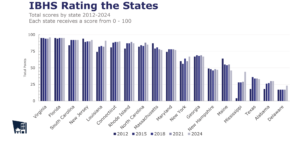Directors and officers liability insurance has gotten trickier and will confront major new challenges over the next few years. Continued rate hikes and narrower coverage guidelines will be necessary as a result, A.M. Best concluded in a new report.
“We expect the profitability of D&O insurance underwriters to remain under pressure over the near term, following six or seven years of inadequate pricing,” A.M. Best said in its report. “Companies need to take reasoned, corrective rate actions, leading to accounts being priced more adequately for the exposures presented. Underwriters will also need to be more astute with regard to decision-making about risk selection, coverage provisions, limitations and exclusions.”
Insurers offering D&O insurance face challenges including the “increasingly complex and interconnected business environment” as well as emerging exposures such as social inflation, securities action lawsuits and cybersecurity. D&O coverage is also increasingly tapped to address allegations such as failure of companies to disclose climate change risks or responsibility for environmental damage, A.M. Best said.
Even cannabis is placing added pressure on the coverage. D&O claims relating to companies operating in the cannabis industry are growing, A.M. Best noted.
D&O Market Tightening Gains Steam
The insurance industry has already been trying to raise rates in order to address the D&O market pressures since 2018, A.M. Best said. Those actions stemmed from “higher loss settlements and growing defense costs caused by a rise in litigation, as well as more diverse types of claims,” according to the report. Since then, those actions have only gained momentum.
“Upward pricing not only continued through the end of 2019 and into 2020 but has also gained steam for some exposures…in terms of the magnitude of the price increases,” A.M. Best said.
Affected areas include D&O clients with high-risk profiles in areas including general healthcare, technology and life sciences.
A.M. Best pointed out that many insurers are also tightening policy terms and conditions for different industry sectors and risk classes. Driving this is a push to reconsider coverage appetite and to limit underwriting profiles for “different types of public, private and nonprofit companies.”
The D&O market is still competitive even as the risk dynamics have become more complex, leaving insurers in a “quandary” as their results have deteriorated in areas such as private and nonprofit D&O.
A.M. Best’s full Market Segment Report is: Expanding Risk Exposures Present D&O Insurers with Significant New Challenges.”
Source: A.M. Best





















 The Supreme Court Just Complicated Employer Diversity Initiatives
The Supreme Court Just Complicated Employer Diversity Initiatives  Worst Is Over: Most of Casualty Reserve Hole May Be Filled, Analyst Says
Worst Is Over: Most of Casualty Reserve Hole May Be Filled, Analyst Says  Cat Losses, Auto and HO Price Hikes Continue at Allstate
Cat Losses, Auto and HO Price Hikes Continue at Allstate 








